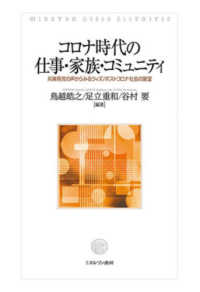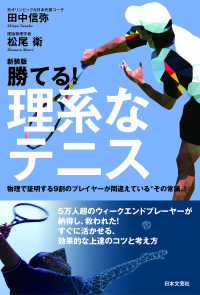基本説明
Psycholinguist Maya Hickmann presents an original comparative study of discourse development in English, French, German, and Chinese.
Full Description
This comparative study explores two central questions in the study of first language acquisition: What is the relative impact of structural and functional determinants? What is universal versus language-specific during development? Maya Hickmann addresses these questions in three domains of child language: reference to entities, the representation of space, and uses of temporal-aspectual markings. She provides a thorough review of different theoretical approaches to language acquisition and a wide range of developmental research, as well as examining all three domains in English, French, German and Chinese narratives. Hickmann's findings concern the rhythm of acquisition, the interplay among different factors (syntactic, semantic, pragmatic) determining children's uses, and universal versus variable aspects of acquisition. Her conclusions stress the importance of relating sentence and discourse determinants of acquisition in a crosslinguistic perspective. Children's Discourse will be welcomed by those working in psychology and language-related disciplines interested in first language acquisition.
Contents
1. Introduction; Part I. Available Theories and Data: 2. Theoretical issues; 3. Crosslinguistic invariants and variations; 4. Coherence and cohesion in discourse development; 5. Children's marking of information status: referring expressions and clause structure; 6. The acquisition of spatial and temporal-aspectual devices; Part II. A Crosslinguistic Study of Children's Narratives: 7. Methodological issues; 8. Animate entities; 9. Space; 10. Time; 11. Conclusions; Appendix.







